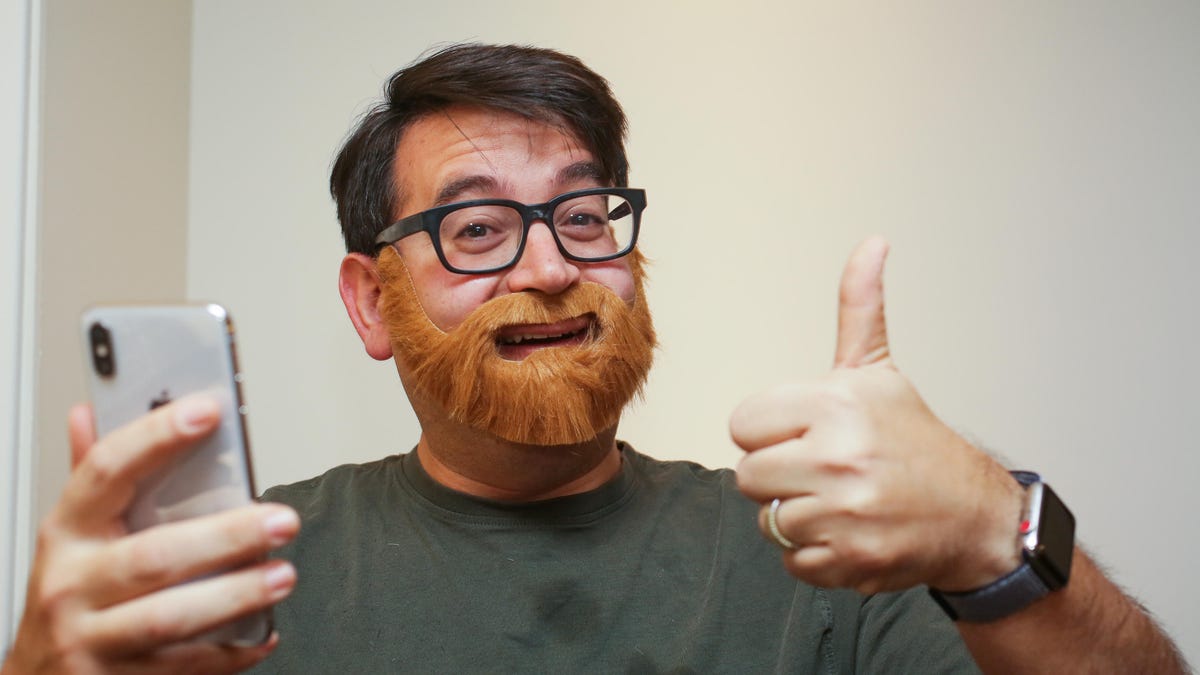Face ID 2 could be the biggest improvement on the iPhone XS
Face ID isn't perfect. Here are some key ways it could be killer on the next iPhone (and iPad).

I wake up. I reach for the iPhone X. I pick it up in the dark, face half-smushed in the pillow. I feel the haptic rattle. The iPhone X won't recognize my face.
It's frustrating, because there's no denying that Face ID is an amazing technology: Bleary-eyed wakeups notwithstanding, it works most of the time, and it's the best facial recognition biometrics on any phone. Much like AirPods, Face ID often feels like classic Apple "automagical" game-changing tech.
But it could use improvement.
Apple's bold, button-free biometric security swap from Touch ID fingerprint sensors to Face ID facial recognition was the signature feature of the company's $999 iPhone X. It was the driver of the now iconic notched full-screen design. A full year since its introduction, competitors haven't come close to matching it. Plenty of Android phones have facial login options, but they're all less secure backups to fingerprint scanners, which have migrated to the backside of the phone, or even inside the screen itself.
But Face ID still feels more complicated on an everyday, in-the-moment basis than Touch ID, just because it's unclear when it will work or fail. Apple's support page for Face ID issues might help you -- or try this tip if you wear sunglasses a lot. In my experience, Touch ID always had a more reliable success rate, assuming my finger was on the sensor, and not wet or too cold.
But for its 2018-19 product line, it sounds as if Apple is going all-in on Face ID. At Apple's Sept. 12 event -- if the rumors are true -- Face ID could move from the high end to the mainstream. We may end up with as many as five devices with Face ID: three new iPhones and two new iPad Pros.
If that's the case, I expect Face ID to get a second-generation revamp in these new 2018 devices. It's starting from a strong position, but if Apple can make things better the second time around, it could make all the difference in helping iPhones (and iPads) be more convenient and universally accessible this time around. That's doubly important, as Apple will be prompting tens of millions of potential customers to make the jump from the familiarity of Touch ID to the new Face ID iPhone models rumored to be priced lower than last year's pricey iPhone X.
To that end, here are the improvements I'd love to see on "Face ID 2."
Face ID could use a speed boost.
Get faster
Apple's Touch ID 2 sensor -- first introduced in the iPhone 6S in 2015 -- was considerably faster than first-gen Touch ID, but I have a feeling that a faster Face ID 2 would be even more important. On the average day, it feels like I'm waiting for the iPhone X to unlock just a second slower than I expect. That swirling, twisting log-in animation seems to hang, or sometimes it never happens at all. Faster unlocks, more seamless phone.
Multiple faces
Touch ID can work with five different fingerprints, which is great for helping someone who needs assistance with an account. Face ID's one-face system favors a one-user experience… maybe fine for iPhones, which are mostly personal, but for iPads that frequently swap users it'll be extremely annoying. iOS 12 will add a way to add a second face to Face ID (or "alternate appearance"), which is a start.
Wider angles
Face ID's infrared TrueDepth camera recognizes faces at various angles, but at extreme angles it fails. That bothers me most when I try to peek subtly at the iPhone while at my desk.
Closer range
Face ID on the iPhone X is optimized to work at arm's length. That's one reason why my early morning, glasses-free squinting from bed doesn't always work. An improved TrueDepth camera that better handles times I'm lifting my phone close to my face would mean one less time I enter my passcode.
An opportunity for big changes
Face ID's an impressive first-generation achievement, but it has an element of uncertainty that I still don't love. But… better Face ID? For the second year in a row, it could be the best thing Apple announces at its upcoming fall event.
See also
iPhone XS launch event: Everything we expect on Sept. 12.
How to watch the iPhone event: Follow along live on Wednesday.

